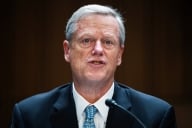You have /5 articles left.
Sign up for a free account or log in.
Ohio's Oberlin College doesn’t offer a marketing degree. But its faculty members and students, ready or not, have begun to learn all about the process of selling -- in this case, of the institution itself.
Since last fall, a marketing specialist has been polling students, talking to alumni and conducting focus groups to help administrators distinguish the institution in a competitive college market, while also following the guidelines of the college’s strategic plan, which was laid out in 2005. Now that the initial legwork is finished, the marketer has suggested that Oberlin pursue a “concept of fearlessness,” which, in turn, has raised some thoughtful introspection among those loyal to the institution.
In recent years, the college, long a highly regarded liberal arts institution with a reputation for attracting motivated and often iconoclastic students, has faced periodic budget crises, and administrators have implemented ongoing strategies in an effort to firm up the finances.
"I feel that a ‘fearless’ messaging campaign will help Oberlin stand out and encourage students to take a look at what’s different about the college,” says Mark Edwards, a Massachusetts-based marketing specialist, who is leading the effort. “The word will be central in positioning the unique flavor" of the college.
As students and faculty members first learned about the plan, many said that simply incorporating "fearless" into the branding of the college would be meaningless. One student joked, "I guess I fearlessly go to class everyday." One professor said that he didn't see anything wrong with the college's image. "If it's not broke, why mess with it?" he asked. "I guess I'm fearful."
But Edwards and college administrators have taken on those concerns, saying that the plan was never to simply throw a word out there and see if it stuck. Edwards says that before the end of the calendar year, one might expect to find phrases containing the word to begin appearing in college view books and creeping into speeches given by its top administrators.
After the strategic plan was put in place last year, administrators and alumni were especially keen on “enhancing the value and perceived value of an Oberlin educational experience,” according to Al Moran, vice president of college relations at the college.
Marketing experts say that Oberlin is not alone in trying to shape a unique identity. “Securing ‘mindshare’ among prospective students has never been more competitive, so regardless of a school's financial status, executing on a fine-tuned, highly focused marketing program isn't an option, it's a necessity," says Eric Sickler, a consultant with Stamats, Inc., a higher education marketing firm. “That's exactly where Oberlin and hundreds of colleges and universities across the nation find themselves today.”
Even with increased competition, some faculty members have speculated that it’s an odd time for Oberlin to be focusing on marketing, especially after a series of recent cuts at the college. For instance, the popular Oberlin-in-London study abroad program was suspended for the 2005-6 academic year due to budgetary concerns. Moran says that those financial concerns are important, but that Edwards’s time has not cost college funds so far. Members of the institution’s Board of Trustees have personally funded the payments to Edwards to this point.
The timing of this marketing effort coincides with a financial concern that is specifically mentioned in the strategic plan, which calls for an enrollment reduction of 163 undergraduate students by 2010 in order to facilitate “modest but essential increases in net tuition revenue per student.” By recruiting more students from high-income families, Oberlin would thus have more tuition dollars coming in and less financial aid going out.
While Moran says that there is no direct correlation between the branding effort and the financial picture at the college, Edwards does note that having “a clear message is important for enrolling the right students and faculty and helping to raise money.”
“Branding alone as a ‘solution’ to financial problems would be inadequate,” says Tim Westerbeck, managing director and principal of Lipman Hearne, a marketing firm that often consults for institutions of higher education. “It needs to be part of an overall program that first considers everything from institutional strategy, competitiveness of the offer, operations, culture and other factors that relate to the ‘experience,’ before branding can do its work to build awareness of value.”
Financial matters aside, the chief concern among administrators, faculty members and students appears to be pinning down the Oberlin macro-identity.
The college's current slogan, "Think one person can change the world? So do we,” is expected to remain, but the fearless concept, says Edwards, is more distinguishing. “Look at Oberlin’s competitors -- check out their Web sites -- the words and photos that they use are almost interchangeable,” he says. “It’s not a smart way to communicate who you are -- clarity builds affinity.”
While some faculty members are unclear at this point on how exactly the concept will provide clarity, many agree that something needs to be done to help differentiate the college. “When I applied to college (in the early 1960s), my high school guidance counselor gave me three names: Oberlin, Swarthmore and Reed, saying these were the top liberal arts colleges in the U.S.,” recalls Michael Henle, a professor of math and computer science at the institution. “Today the picture is not so clear. For example, Oberlin is presently No. 23 in the U.S. News and World Report ranking of liberal arts colleges.
“My view is that Oberlin’s strategic plan, and its financial plan, and its potential 'branding,' are all important as part of an effort to bring Oberlin back to where it once stood in higher education,” says Henle.
“I don't agree with adding 'fearless' to the official motto, but I do agree with what it stands for, and that the word appearing somewhere in a mission statement wouldn't bother me nearly as much,” says Morgan Pitts, a junior at Oberlin.
Ken Kuttner, a professor of economics at Oberlin, says that he thinks “fearless” works well as “more of an organizing principle or theme -- an idea we could use to help define ourselves, rather than put on a T-shirt.”
“The idea is intended to convey the idea that we welcome ambitious students, intellectual risk takers -- and yes, even those with the slightly ‘unorthodox’ outlook that Oberlin prides itself on attracting,” he says. “To me, this seems like a nice angle to play up: potentially attractive and distinctive, while still in keeping with the traditional Oberlin ‘values,’ if you like.”
Some Oberlin students have a different term for what Kuttner labels “unorthodox values.” “All my friends know that Oberlin students are different,” says Colin Koffel, a political science and psychology sophomore. “It comes out as ‘weird’ sometimes, but I see it as a ‘good weird.’ ‘Fearless’ actually does embody a lot of what I see here in regards to our convictions.”
Says Pitt, “Obies are a sort that are never afraid to stand up for what is right and to take academic and social risks. Oberlin is a place where few people panic about the amount of work they do, because they're here to study what they want to study. 2 a.m. conversations in a dorm common area are much more likely to be about current politics or society than they are about how the Cleveland Indians are doing or who is dating whom.”








